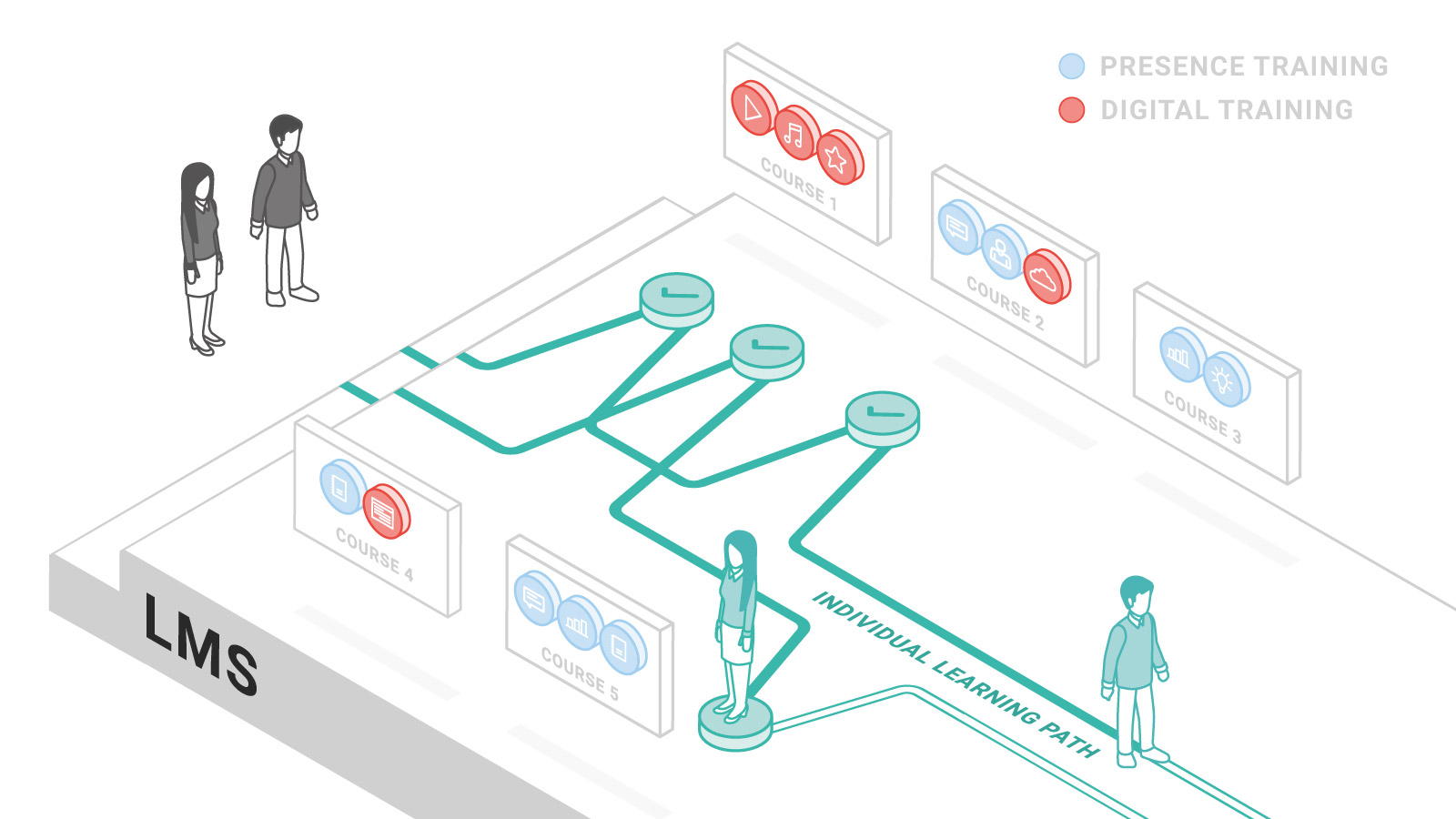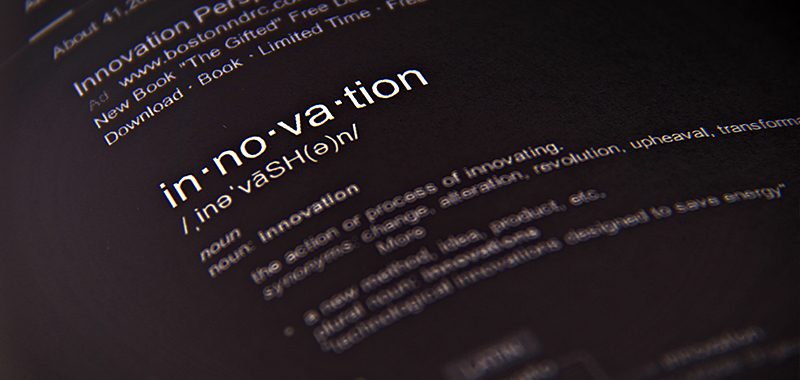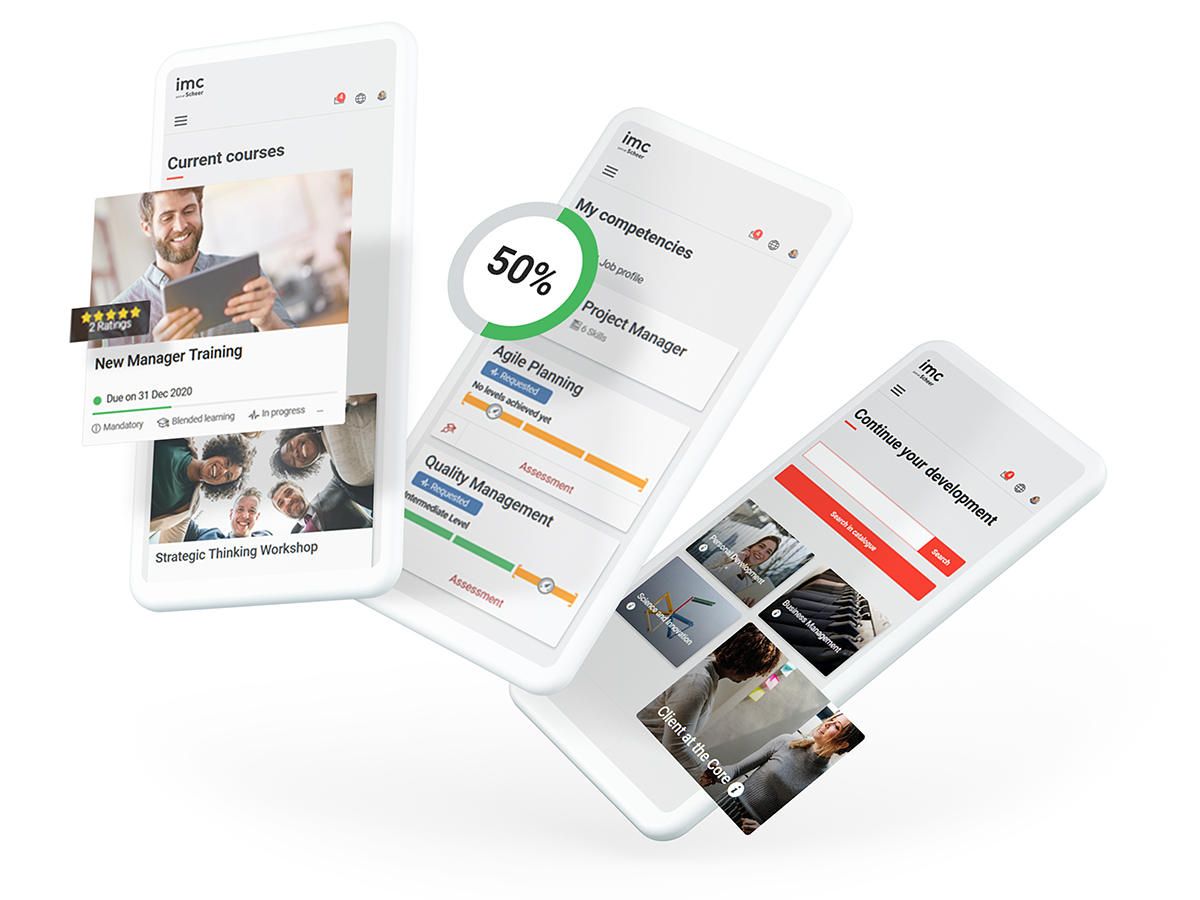
Diary of a Learning Management System
imc Learning Suite: Six pro tips to make your life easier when working with the LMS
Ever had words with your car? Yelled at the TV? Sworn out loud as you stab angrily at your PC keyboard? Or muttered “stupid system!” – only to discover, somewhat sheepishly, that the problem lay with you, not the system? It’s OK, we’re no different. Our consultants are intimately familiar with this phenomenon, too.
That’s why we talked to our consultants about the misconceptions and obstacles that most frequently cause LMS clients grief, and how they can be overcome. And sometimes it’s good to see things through the other person’s eyes, so we’ve decided to write this from the point of view of our learning management system and share some tips for a better handling of the LMS. That’s right, you may not be aware of it, but our LMS has feelings too, and it’s only trying to help!
The following excerpt from the diary of our learning plattforn is a light-hearted take on human-system interaction, but it contains genuine and practicable expert advice that will hopefully make working life less stressful and more relaxed for all concerned – you, the system, and our consultants.

Dear Diary,
8 a.m.: Dealing with a sudden mass influx of visitors
This morning, I wasn’t even fully awake and was hoping for a slow start to my day, but then I received another error message from China. It was from that important guest who checked in recently. Humans, by the way, always call guests “clients”, but “guests” sounds so much nicer to me.
Anyway, this super-important guest thinks it’s okay to check in an additional 50,000 learners without first telling us and giving my human colleagues – imc’s consultants and architecture experts – a chance to make the necessary server preparations. These preparations are quick to implement, but they’re not instantaneous. I mean, have you ever tried to find room for 50,000 guests who show up on your doorstep unannounced? We pride ourselves on being great hosts, and part of being a great host is being prepared.
Pro tip 1:
If you know you are going to need a large volume of additional licences, please give the consultants in charge seven to ten days’ advance notice.
Note: This does not apply to completely new clients or enterprise groups. In these cases, the preparations take an average of three months, as the process is a lot more involved.
12:15 p.m.: Bugs vs. user errors: Banishing misconceptions
My personal coach, Lia, always says I need to work on my stress management – it was her recommendation to keep a diary. I like Lia. She listens and helps me manage my endearing little peculiarities – the things that humans for some reason call bugs.
Bugs! Such an unkind word to use, given that everyone has their little quirks and tics. And to be perfectly honest, many of so-called bugs are not actually my fault, they’re user errors. There is always potential for user error, which is why my human colleagues and experts – wonderful people like Andreas and Christian – are there to help. They are excellent human-machine interpreters and are only too happy to clear up these sorts of little misunderstandings and misconceptions.
Pro tip2, for system administrators
Please do the user training sessions with our consultants and refer to the relevant training documentation. It will save a lot of time, boost productivity and reduce stress. That’s a promise!
1:00 p.m.: How gamification boosts motivation and enhances learning outcomes
It’s so pleasing to see that my new functions are being accepted and used by more and more guests. And to think that only a couple of years ago, they still had to log in separately to every system I’m connected to. Such a chore and a bore! But now, thanks to single sign-on authentication, it’s all so much simpler, and they can now access the entire learning ecosystem with a single click.
A lot has happened on the gamification front too. Being able to collect badges after completing courses is extremely motivating and makes learning much more fun. Up until quite recently, gamification tended to be frowned upon, especially in the more staid German companies. They’re supposed to be learning, not playing! Well, I disagree, because I can combine learning and play.
Successful learning comes from motivation, which is why I wholeheartedly recommend my skill management feature. With skill management, I can facilitate employee development by highlighting the skills employees already possess, and those they are yet to acquire.
The employer can then compare this information with the skill requirements in job profiles to identify which candidates still need development in specific areas, and which ones are suitable for the role because they already have the required skill set. This can be applied to all selection scenarios, from promotions to filling vacancies. I firmly believe that not using this feature is a wasted opportunity, particularly for guests who have a lot of office-based employees.
Pro tip 3
Don’t be afraid to move with the times! E-learning is so yesterday. Today, it’s all about creating unique learning experiences. Whether it’s small hacks, the use of gamification, or skill management, your employees will not only love it, they will become more productive.

3:30 p.m.: Using Netflix-like features to create unique learning experiences
Time for a coffee break, time to share a little secret: I will soon be getting some amazing new functions. And the best thing about it is that people are comparing me with Netflix – finally, a function that’s instantly recognizable for every user! Very clever of my developers to have come up with this: my new ability to recognize when different items of learning content deal with related topics. I can now recommend new courses or learning videos based on these similarities.
I can’t wait to see how this function is received once the first guests start trying it out. Who ever said learning systems are unsexy?
Pro tip 4
You should definitely check out the new channel function. Channels not only look great, they transform learning into a real experience.
3:45 p.m.: Courses and learning paths made easy
That’s my caffeine fix sorted. Time to move on to the next real challenge – in the form of a new guest from Australia. This guest creates three new courses, then complains that there’s no easy overview of who has done the courses or completed the tests.
But that’s another major misconception, unfortunately, because the solution he needs is already there: learning paths. Let me explain. First of all, there’s learning content. That can be any kind of training, whether face-to-face or digital. If I combine multiple items of content, then that’s a course. I can then combine multiple courses to create a learning path. If I want to, I can then also define various course prerequisites.
The idea of prerequisites is that the learner can’t progress to a higher-level course until they have passed the courses below it. You can even create placeholders – course templates – for individual courses in the learning path if, say, the course dates have not yet been finalized. Guests can then book the relevant courses in the learning path once the dates have been finalized, and the courses created. With this set-up, the administrator will always have total transparency regarding how far along the learning path the individual learners are, and can see full details of the courses.

Pro tip 5
Learning paths need to be well thought out because they are intended for longer-term development programmes. In that sense, they are like semester schedules at universities. The latter comprise various lectures or courses, and by the end of the semester, students need to have attended all the lectures in order to pass.
So, it’s important to think carefully in advance about the purpose for which an item of learning content, a course or learning path is being created. Once you have created a learning path, it’s not that easy to make changes. If you are unsure, it’s best to double check with our consultants.
5:00 p.m.: Smart decisions with learning analytics
What a day! But the end is in sight. Meanwhile, there’s something I really want to get off my chest: I’m a precision system, and I can show humans exactly what they want to – or are allowed to – see, but only if they correctly specify what they want via my user interface.
The same principle also applies to authorisations. It makes total sense that sales consultants who only sell, say, drilling machines should not need access to user guides for gardening tools. But to give effect to that, you actually need to specify it in the roles and rights concept. That way, the group defined as “sales consultants for drilling machines” will only be able to view user manuals for drilling machines.
Also, my creators are constantly talking about learning analytics and how it can be used to create really cool dashboards. That’s another new functionality that I’m very proud of. Learning analytics enables you to “measure the business outcome of the learning process,” as my big boss and Head of Product Management here at imc, Wolfram Jost, would say. In other words, learning analytics lets humans track whether they are getting a good return on their investment in learning. Definitely a key technology to keep an eye on!
Pro tip 6
To get the right answers, you have to ask the right questions, so, if you would like to make purposeful use of learning analytics, it’s worth talking to a data expert or asking our consultants about targeted training courses.
6:00 p.m.: Performance review and new developments on the horizon
Well, it’s nearly time to finish up for the day, and I’ve got a really nice evening planned. The product management team will be coming by shortly, and I’ll be paying really close attention to what they say, because it’s about my future. I love my product managers because they’re always checking me over closely to spot untapped potential and find ways of making me even better than my competitors. Time to grab some data snacks, sit back and relax. I can’t wait to find out what updates they’ve got in mind for me.
Ok, Diary, talk to you again tomorrow!

Learning Ecosytem: A universe of Learning
If you want to use a learning ecosystem successfully in corporate learning, the technical requirements must be right. Time to shed light on what systems have to fulfil in order to be able to meaningfully map a genuine learning ecosystem.

The Ultimate eLearning Jargon Glossary
LMS, LXP, SCORM, WBT, EPSS, NGLE, CBT, ITS!? Lost in a world of elearning terms and abbreviations? No worries, we can help. In this A to Z, we shed some light on the subject and have compiled a list of the most important terms and abbreviations in the field of e-learning in 2022.

More about our LMS
If you would like to learn more about imc's Learning Management, check here for more information.
